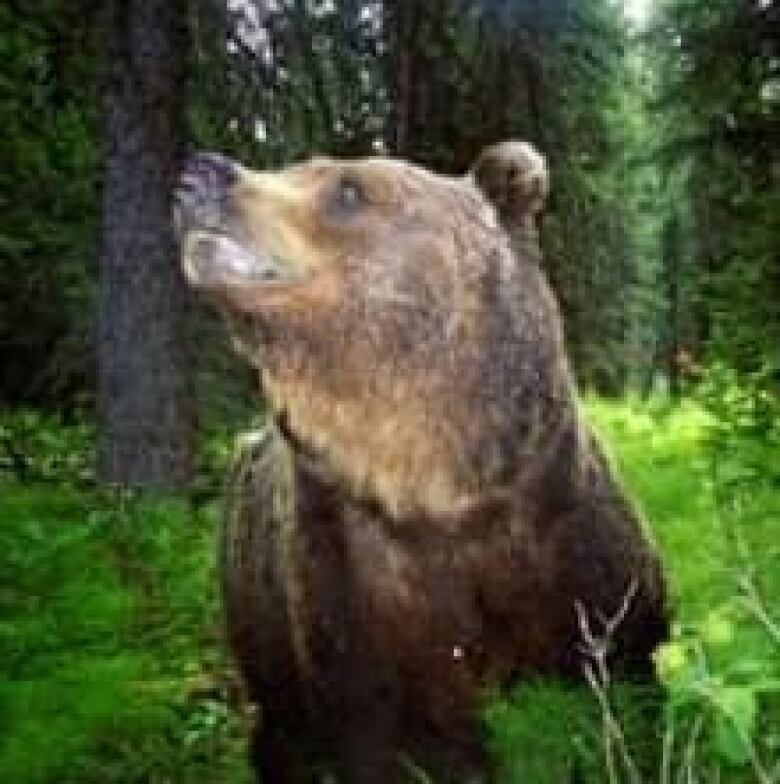Alberta wildlife caught on candid camera
A research group at the University of Calgary is using motion-sensitive cameras to monitora forest reservein southwestern Alberta, but they're not just watching animals.
The group is also looking at human activity in the Livingstone Range southwest of Calgary, a provincial forest reserve at the headwaters of the Oldman River.

The Miistakis Institute for the Rockies has been strapping infrared cameras to trees for the past three summers to track human and animal activity in the backcountry. Photosshow the impact of hikers and other humans on animals.
Michael Quinn, the Miistakis Institute's research director, said animals often use hiking trails during the week, but leave before the weekend rush.
"They go to higher elevations or away from the human trails, and on Monday morning they're right back on those human trails again. And in a lot of cases, they'll prefer to travel on those human trails. So most of our grizzly bear shots, for example, are on human trails."

Human activity is also havingother impacts on animal activity, especially on weekends.
"In the summer, we definitely see animals being displaced from what we know is critical habitat, especially down along the main rivers."
Cameras kinder than collars
The cameras are triggered by motion and heat. Quinn says a camera on a tree doesn't disturb animals the way a collar might.
"We can collect all this info without having to handle animals and stress animals," he said.
The photos show bears, elk and even flying squirrels caught unaware.
"The images are really data, but they're also great wildlife shots and they're fun to share,"said Rachelle Haddock, a student researcher for the project.
The cameras will keep snapping photos until next summer. Data from the project will be used to plan trail use in the area.
Photosare on display at the university until April 14.












_(720p).jpg)


 OFFICIAL HD MUSIC VIDEO.jpg)
.jpg)



























































































